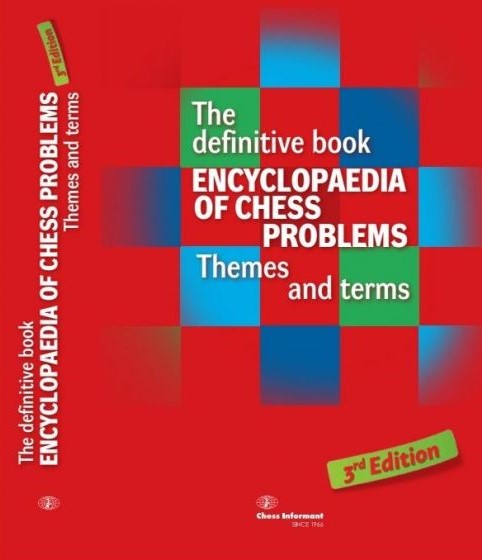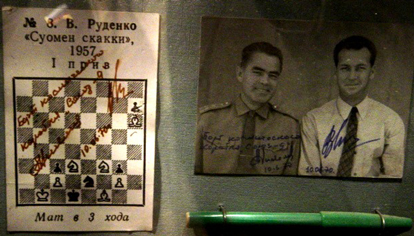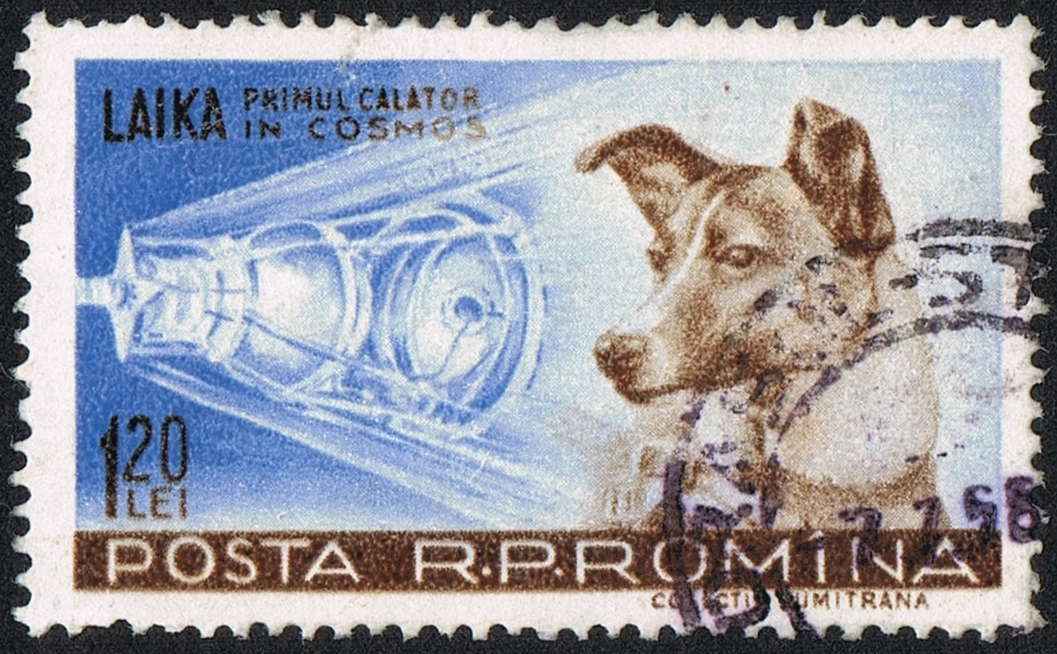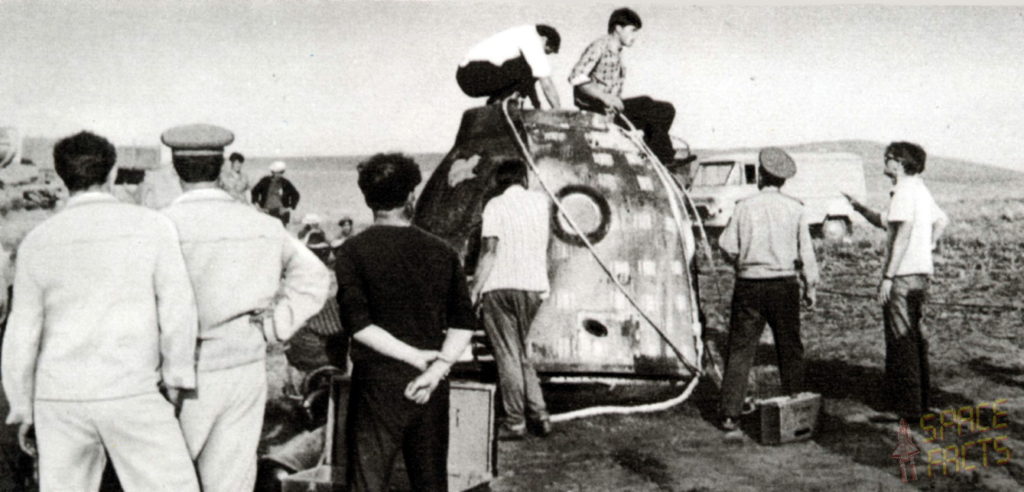


“Space - the final frontier!”
-Star Trek, 1966
First of all, my formal apology goes out to all readers, and my hope is that by accidentally offering smaller articles, readers more easily can digest them. You might have noticed that your author has made a mistake last week by sending in the wrong text for publication, an early draft on Rudenko, which might have led to confusion because the studies shown below did not fit the article subject (their composers will be covered soon with other study examples). I was kindly allowed to complete his biography and offer a few of Rudenko’s works.
 I have talked about the FIDE Album previously, but to shortly reiterate: in it, an endgame study nets 1.67 points and any other problem nets 1 point, and the points are divided among the authors. The selection process by multiple judges should ensure only the best compositions are included — the FIDE Album is meant to be an anthology to be browsed through and enjoyed. As the titles for composers are coupled to the points, with the Grandmaster title at 70 points being a lifetime reward reached only by the composers who create many outstanding works over long periods of time or in many different genres, Rudenko’s score of 200.92 points is an outstanding achievement. He created over a thousand compositions in total, and already at the age of 42, in 1980, he became Grandmaster for Chess Composition.
I have talked about the FIDE Album previously, but to shortly reiterate: in it, an endgame study nets 1.67 points and any other problem nets 1 point, and the points are divided among the authors. The selection process by multiple judges should ensure only the best compositions are included — the FIDE Album is meant to be an anthology to be browsed through and enjoyed. As the titles for composers are coupled to the points, with the Grandmaster title at 70 points being a lifetime reward reached only by the composers who create many outstanding works over long periods of time or in many different genres, Rudenko’s score of 200.92 points is an outstanding achievement. He created over a thousand compositions in total, and already at the age of 42, in 1980, he became Grandmaster for Chess Composition.
Another title he held since 1960, International Judge for Chess Composition, is more of a certification received after having judged many international tourneys at a young age, i.e. he awarded the prizes, honorable mentions and commendations there. Such an opportunity is always a matter of trust between the tourney organizers (for magazines, usually the editors of the problem columns) and the judge.
Despite Rudenko’s efforts for endgame studies, experts in the field of threemovers — problems with the stipulation “Mate in three moves” — also recognize the developments he provided there. Unknown to me is the nature of the Dnepopetrovsk (Dnipro, since 2016) “Rudenko School of Chess Composition”, which seems to be either a physical school or a local organization. Russian chess news sources reported in 2012 that then FIDE President Kirsan Ilyumzhinov wanted to make the Ukrainian city a centre of chess culture, as he opened a Chess Art Week, to which said school contributed along with other local places (as an example, the museum of history held an exhibition on the development of chess in the region).
 No biography on Rudenko would be complete, at least regarding chess, without mentioning the Rudenko Paradox and the Rudenko Theme (and one variation of each) in problem chess. Unfortunately, I lack the expertise to explain such concepts, so I will refer to the Encyclopedia of Chess Problems by Milan Velimirović and Kari Valtonen. Both definitions are taken from tha publication — in the source, there are illustrations and accompanying problems. A “phase” is the set play (the play that would happen if the other side was to move first), or the play after the key move (first move), or after each try of a problem. Variations after the key move, each try, or set play respectively are part of the same phase.
No biography on Rudenko would be complete, at least regarding chess, without mentioning the Rudenko Paradox and the Rudenko Theme (and one variation of each) in problem chess. Unfortunately, I lack the expertise to explain such concepts, so I will refer to the Encyclopedia of Chess Problems by Milan Velimirović and Kari Valtonen. Both definitions are taken from tha publication — in the source, there are illustrations and accompanying problems. A “phase” is the set play (the play that would happen if the other side was to move first), or the play after the key move (first move), or after each try of a problem. Variations after the key move, each try, or set play respectively are part of the same phase.
My abovementioned lack of expertise won’t allow me to show you any problems with those ideas. Instead, the Schwalbe PDB server may help, containing as of 30 April 2020 only 44 problems with indexed Rudenko ideas — of course, this is less than a tenth of the problems there by Rudenko. As the notation there is German, readers ought to know it is in the KDTLSB format (compared to the English one: KQRBNP). After clicking on any replay arrow under a problem, mouse-over for its notation is enabled, i.e. it can be replayed by moving the mouse cursor over the notation. Readers familiar with our replayable studies (such as below) might not have noticed this feature. The search expressions “K” and “A” in the links above search for keywords and author respectively.
Rudenko’s biggest success apart from the one outlined below was winning the 5th World Chess Composition Tourney in 1972-1975 overall. He also won with Ukraine and obtained multiple first places in such tourneys. I found his moremovers winner on a Greek website, but was unable to find the theme of this section in the 1st WCCT (I saw the problem before, but don’t know exactly where, maybe in Krabbé’s chess curiosities books). It is reproduced below. In the 2nd WCCT, he won with Popandopulo in section C — replayable here.
Accepting one of his proposals, January 4th became International Day of Chess Composition (details are explained in the previous article).
The chess enthusiast might be satisfied with the information provided here, but for one interested in curiosities a holiday is upcoming: the 50th anniversary of the Russian space mission “Soyuz 9”. What does this have to do with Rudenko? Well, the now deceased heroes of said mission had a strange artifact aboard. It was a piece of paper with some cyrillic letters, a strange square composed of mostly grey and white smaller squares, but with some symbols on some of the squares. Below that square were a few words, and above it was the cryptic code, also in cyrillic:
No. 3 V. Rudenko - “Suomen skakki”, 1957 - (the diagram) - 1 P r i z

A chess player immediately will have grasped the meaning of said artifact: it was the reprint of a chess problem by Valentin Rudenko, winning the first prize in the “Suomen Shakki” tourney 1957. The Russian space program achieved plenty of records, and they also had the first chess problem in space. Of course, that was less than a decade after Yuri Gagarin’s first spaceflight. But there is one question to which I can’t offer any answer: Was Rudenko’s problem taken aboard in the memory of another space hero? Or rather — a heroine?
As some will know, there was someone prior to Gagarin who entered space. A young woman was seen strolling on the streets of Moscow who was thought to be an excellent candidate for becoming a cosmonaut. Despite her young age, she passed the tests she was subjected to. So Zhuchka was trained until she was ready to enter space on 3 November 1957 — the year of Rudenko’s problem! Then, just a few hours later, a horrible accident occurred: the capsule overheated and, with no escape, she died. Nevertheless, it was her sacrifice that started a new era for humanity. So maybe the year was chosen deliberately in honor of the tragic hero of the Sputnik 2 flight: young dog Laika.

The Ukraine Chess Federation reported also that Rudenko was responsible for the construction of over 60 scientific satellites, and he was a member of the presidium of the USSR Cosmonautics Federation (as reported by Andrey Selivanov, in Russian).
Despite the problem being very well known, it is replayable below with a selection of studies by Rudenko. Most of his small output of endgame studies (ca. 30) was together with Tigran Gorgiev (see our February 2020 article for more information on Gorgiev). The “Soyuz 9” mission will have its 50th anniversary next month. So when you hear those news, it is likely many journalists won’t know about this chess problem. You will.

The recovery of the “Soyuz 9” mission
As a personal note, I was always fascinated by the possibilities of spaceflight. While for some time I believed it all to be useless (after all, even the next solar system is so far away that it takes a lifetime to reach it), new developments fuelled the idea of pioneers settling on Mars, the idea that — as a famous video game once described it — we would no longer be earthlings or planetlings but children of the stars. The logistics of such an endeavour, already of such basic things as enabling someone to grow their own food or produce electricity, or just having a safe shelter from the Marsian weather, are frightening.
Space is a harsh mistress, and it will be very difficult to settle on other planets or even in other solar systems — and while I am still sceptical, maybe in a few decades, maybe in a hundred years, our descendants will travel from Earth to Mars and back as normally as we use our cars. But while we don’t know whose chess problem was the first to be transported in a car, in the annals of history there will be a small trivia fact passed along between chess historians on Mars and Earth alike:
Valentin Rudenko (1938-2016), Russian space satellite engineer. First chess problem in space.
But let me close not with my own words, let me close with those of Andrey Selivanov, who, for Rudenko’s 70th birthday in 2008, had prepared the photo of his problem in the Space Museum of Andrian Nikolayev in Shorshely as a special gift:
Как говорится - Ваше творчество достигло Космических высот!
(As they say - your creative work has reached cosmic heights!)
Click or tap an entry in the list to switch positions
You probably know that you can move pieces on our replay boards to analyse and even start an engine to help you. You can maximize the replayer, auto-play, flip the board and even change the piece style in the bar below the board.
At the bottom of the notation window on the right there are buttons for editing (delete, promote, cut lines, unannotate, undo, redo) save, play out the position against Fritz and even embed the ChessBase game viewer on your website or blog. Hovering the mouse over any button will show you its function.

World Federation for Chess Composition (www.wfcc.ch)